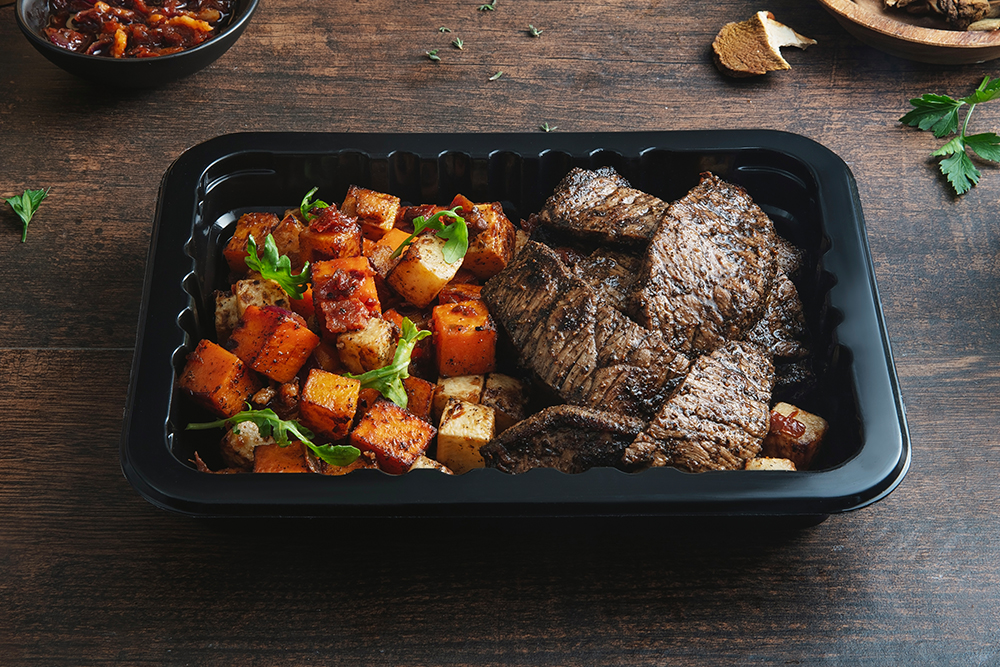If you’re in your forties, or beyond, you’ve probably realized that the way you used to eat just doesn’t cut it anymore. And no, it’s not in your head. There’s real science behind this shift. Hormones aren’t just about reproduction; they play a major role in metabolism, muscle, and fat distribution. When you start adjusting your nutrition to work with your hormones, not against them, you can support better metabolic health and reduce those frustrating hormonal symptoms. Let’s break down what changes to make and how those needs shift from perimenopause to postmenopause.
Perimenopause

How the Hormonal Changes of Perimenopause Influence Nutritional Needs
The average age for the onset of perimenopause is around 43, but this timeline can vary based on factors like genetics, whether or not you’ve had children, and if you’ve had a hysterectomy. Perimenopause is a gradual transition that typically spans 8–10 years, as your hormones begin to shift in preparation for your final menstrual cycle—menopause.
One of the first hormonal changes we see is a drop in progesterone, while estrogen levels may begin to fluctuate or even rise. This imbalance can impact how your body regulates inflammation and may contribute to histamine sensitivity. That’s why, during perimenopause, some women experience new or worsening food sensitivities, seasonal allergies, skin issues, or digestive changes. Incorporating food based solutions to control histamine can help reduce these unwanted symptoms.
As progesterone continues to decline, it’s common to notice shorter cycles and even signs of sluggish thyroid function. This is where nutrient support can make a big difference.
Both vitamin B6 and vitamin C have been shown to support progesterone levels.
- Vitamin B6 can help lower elevated prolactin, which in turn may support more consistent progesterone production during the luteal phase.
- Vitamin C acts as an antioxidant that protects the corpus luteum, the structure in the ovary that produces progesterone after ovulation, helping to sustain healthy hormone output.

We also know that stress resilience takes a hit during perimenopause. The same stressors that once felt manageable may now trigger more pronounced cortisol dysregulation. This matters because as ovarian hormone production declines, your adrenal glands step in to help pick up the slack. Supporting them is crucial, especially when it comes to reducing hot flashes.
Some simple but powerful ways to support adrenal function during this time include:
Keeping blood sugar stable throughout the day (avoiding both highs and lows)
Incorporating electrolytes and vitamin C daily
Being mindful of extended fasting, especially if it leads to low blood sugar
Syncing Nutrition and Workouts with your Infradian Rhythm of your Menstrual Cycle
Your infradian rhythm is a biological cycle that lasts longer than 24 hours, unlike your circadian rhythm, which resets daily. In women, the most well-known infradian rhythm is the menstrual cycle, which typically ranges from 26 to 30 days, especially during perimenopause.
When you align your nutrition and workouts with the hormonal shifts of your cycle, you can experience fewer PMS symptoms, better energy, more stable moods, and improved productivity. Here’s how to sync each phase of your cycle:
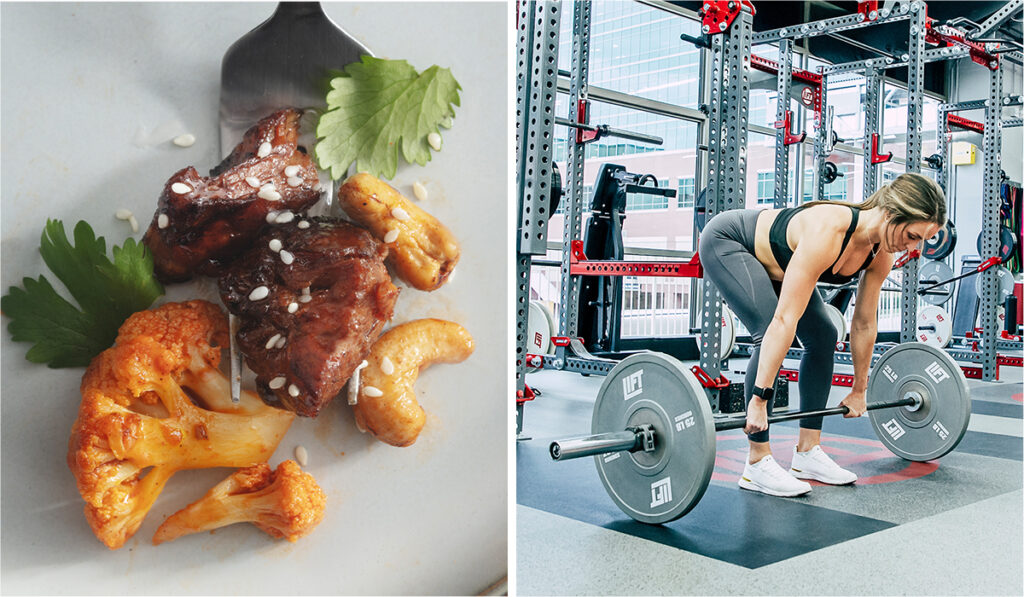
Days 1 – 14 of Your Cycle
Day 1 is the first day of menstrual bleeding.
Workouts:
This is the time to ramp up the intensity. Your body can handle higher intensity workouts and resistance training well.
Energy and recovery tend to be better, especially after menstruation ends.
Nutrition:
Days 1–7 (Menstruation): Focus on cruciferous veggies (like broccoli, cauliflower, and Brussels sprouts) to support estrogen metabolism. Blood sugar is typically more stable, so your body may tolerate more carbohydrates.
Days 8–14 (Pre-Ovulation): Estrogen is high, and histamine issues can show up in sensitive individuals. Incorporate low-histamine foods and mast cell-stabilizing nutrients (like quercetin-rich foods—apples, onions, capers).
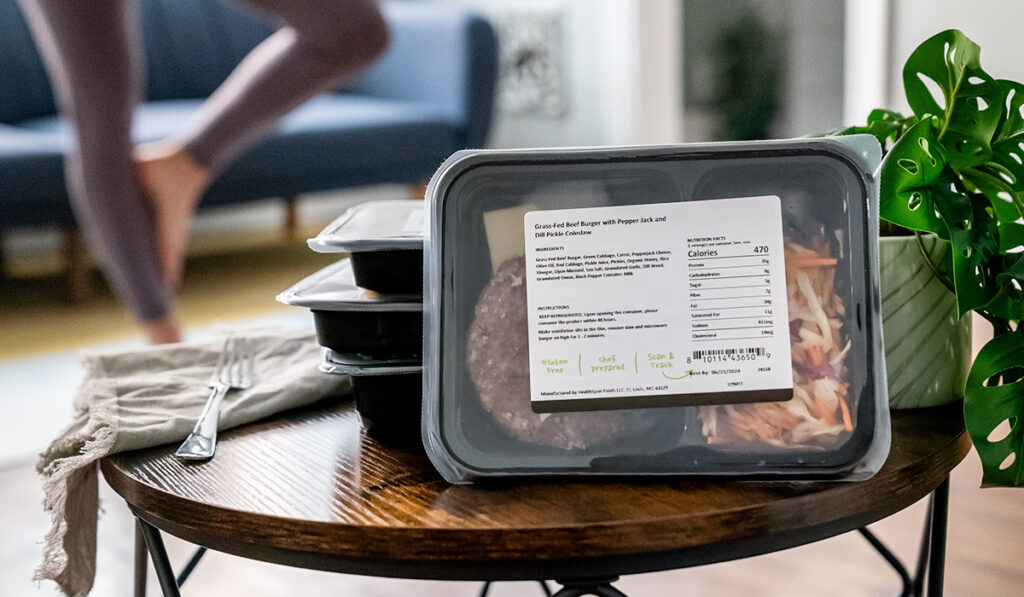
Days 15 – 30 of Your Cycle
After ovulation, progesterone rises, peaks, then drops before your period begins.
Workouts:
Days 15–21 (Early Luteal): You may still feel strong. Continue resistance training and higher intensity workouts if energy allows.
Days 22–30 (Late Luteal): As progesterone drops, fatigue and irritability can increase. Shift to more restorative movement—think walking, mobility, yoga, or low-moderate intensity training.
Nutrition:
Days 15–21: Focus on foods rich in vitamin B6 and C—like chicken, beef, chickpeas, berries, and citrus. Support your muscles by aiming for at least 20g of protein before and after workouts, as your body is in a more catabolic state during this time.
Days 22–30: Support your liver with bitter foods like arugula, dandelion greens, beets, and onions. Histamine sensitivity may spike again. Choose lower-histamine foods to reduce symptoms like headaches, bloating, or irritability.
Menopause

How the Hormonal Changes of Menopause Influence Nutritional Needs
Menopause is defined as one full year after your last menstrual period. As you approach this transition, estrogen and progesterone levels gradually decline. At this stage, the adrenal glands take on a greater role, producing small amounts of hormones that the ovaries no longer make.
During menopause, shifting your nutrition and workouts to align with these hormonal changes can make a profound difference in managing symptoms like bone loss, mood changes, hot flashes, weight gain, and more.
Let’s break down the key adjustments to make post-menopause:
Nutrition Shifts After Menopause
Carbohydrate Metabolism: With lower estrogen and progesterone, your body becomes less efficient at metabolizing carbohydrates.
Focus on higher fiber, lower glycemic carbs like vegetables, seeds and legumes to support blood sugar stability and insulin sensitivity.

Bone & Muscle Support: Estrogen plays a critical role in maintaining bone mineral density and lean muscle mass. As levels decline, the risk of osteopenia, osteoporosis, and sarcopenia increases.
Protein needs increase to counteract muscle loss—aim for at least 0.75 grams of protein per pound of body weight per day. For example, if you weigh 150 pounds, aim for 113 grams of protein daily.
Spread protein evenly across meals
Prioritize high-quality sources like organic chicken, turkey, pasture raised eggs, grass fed beef, wild caught fish, organic legumes, and organic dairy.

Adrenal & Energy Support: As your ovaries slow hormone production, your adrenal glands take on a greater role. This increased demand makes adrenal support more important than ever.
Focus on electrolytes like sodium, potassium, magnesium, and antioxidants like vitamin C
Include foods like: Avocados, leafy greens, citrus fruits, unrefined sea salt, sea vegetables, coconut water
Consider supplementation if levels are low or demands are high
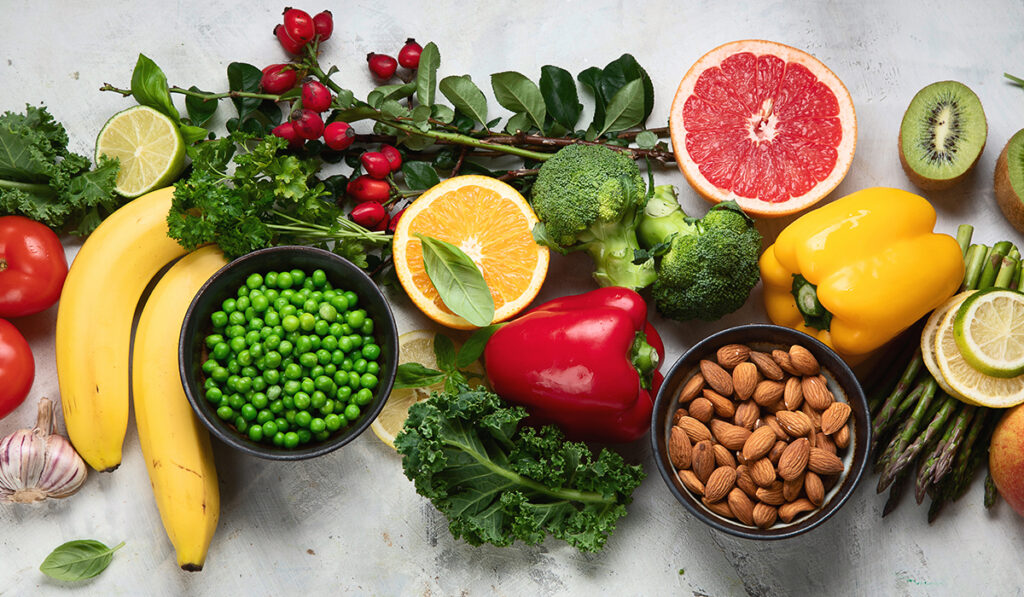
From Infradian to Circadian: A Shift in Rhythm
Because menstruation has stopped, your focus shifts from supporting the infradian rhythm of your cycle to optimizing your circadian rhythm—your 24-hour internal clock that governs energy, sleep, metabolism, and cortisol and melatonin production.
Let’s break down how to support your circadian rhythm with movement, light exposure, and consistent nutrition timing next.
Stick to a consistent sleep and wake schedule.
Try to deviate no more than one hour.
Morning:
Get outside for 20 minutes to help initiate a cortisol response and turn off melatonin production.
Eat soon upon rising- this helps set your blood sugar control for the day and helps initiate a cortisol awakening response, signaling to your body that it is daytime.
Breakfast should be your largest meal of the day. This helps work with your natural digestive processes.
Afternoon:
Get outside for 20 minutes to get Vitamin D and continue to send the signal of daytime to your brain
Limit caffeine intake after midday to reduce the risk of sleep disruption later on.
Evening:
Make dinner your lightest meal of the day. Aim to finish eating 12 – 14 hours before breakfast the next day. For example, if you typically wake at 6 am, dinner should be no later than 6 pm.
Dim the lights and limit electronic device usage to encourage melatonin production.
Engage in relaxing activities. Consider taking a bath, doing breathing exercises, or reading a book.
We’re Here to Help Make Navigating Perimenopause and Menopause a Breeze!
Navigating the hormonal shifts of perimenopause and menopause doesn’t have to feel overwhelming. From changes in estrogen and progesterone to shifts in metabolism, bone health, and stress resilience, your body is asking for different support than it needed in your 20’s or 30’s. Aligning your nutrition and workouts with these changes can ease symptoms, stabilize energy, and help you feel more in control of your health again.
But knowing what to eat and actually having time to plan, prep, and cook are two very different things. That’s where we can help! With high-protein and nutrient-dense meals delivered to your door, you can take the guesswork out of eating during perimenopause and menopause!
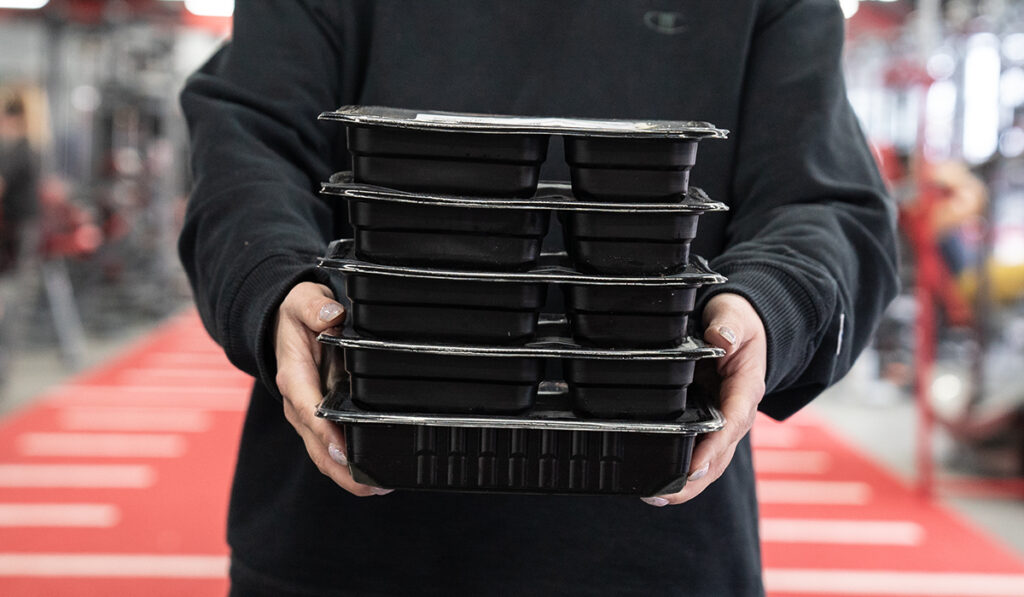
About the Author
Lauren Papanos is a licensed registered dietitian nutritionist and nutrition researcher, published in the Journal of Women’s Sports Medicine. She holds her bachelor’s and master’s degrees in nutrition sciences, board certification in sports nutrition as well as advanced certifications in functional medicine and functional endocrinology. She is the owner of the private practice, Functional Fueling Nutrition where they specialize in working with active women and athletes with thyroid diseases and endocrine and metabolic conditions. Lauren has been featured on national television and in Forbes, Shape and Insider. She is the host of the Strength in Hormones Podcast. You can find Lauren on Instagram at functional.fueling and learn more about her practice at www.functionalfueling.com.

